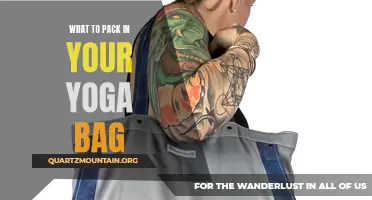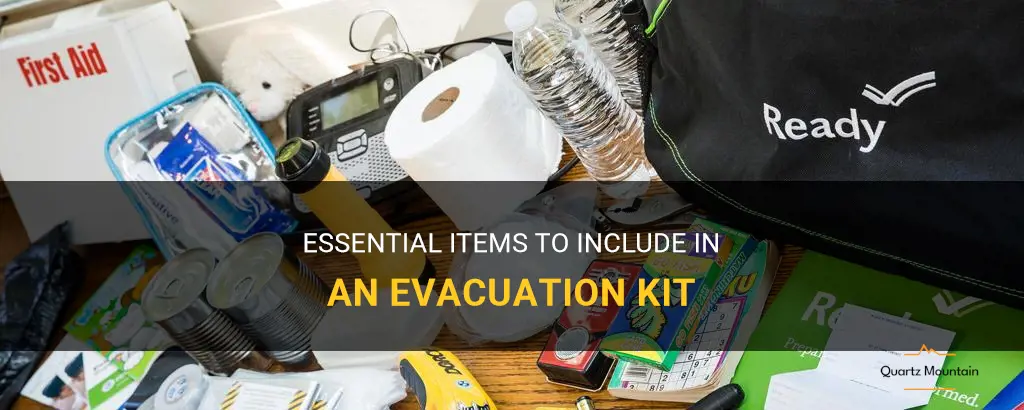
When disaster strikes and you are forced to evacuate your home, having an evacuation kit prepared can make all the difference. Whether it's a natural disaster or a man-made emergency, having essential items in your kit can ensure your safety and survival. From necessities like water and food to crucial supplies like a flashlight and first aid kit, this article will guide you through the must-have items to include in your evacuation kit. Don't wait until it's too late – be prepared and protect yourself and your loved ones in times of crisis.
| Characteristics | Values |
|---|---|
| Food | Non-perishable, easy to prepare |
| Water | 1 gallon per person per day |
| Medications | At least a 7-day supply |
| First Aid Kit | Including bandages, antiseptics, and pain relievers |
| Flashlights | With extra batteries |
| Radio | Battery-powered or hand-crank |
| Clothing | Including extra socks, gloves, and a hat |
| Blankets | Warm and waterproof |
| Whistle | To signal for help |
| Cash | Including small bills and coins |
| Important Documents | Copies of identification, insurance policies, and other important papers |
| Cell phone | With chargers and extra batteries |
| Personal hygiene items | Including toilet paper, soap, and toothpaste |
| Tools | Including a multi-purpose tool and duct tape |
| Maps | Including a local area map and a compass |
| Extra keys | For your home and vehicle |
| Pet supplies | Including food, water, and a leash or carrier |
| Baby supplies | Including diapers, formula, and extra clothing |
| Entertainment | Including books, games, or other activities |
| Backup power source | Such as a portable generator or rechargeable batteries |
| Shelter | Including a tent or tarp |
What You'll Learn
- What essential items should I include in an evacuation kit?
- How many days' worth of food and water should I pack in an evacuation kit?
- Should I include any specific medical supplies or medications in an evacuation kit?
- Are there any important documents or personal identification items that should be included in an evacuation kit?
- Is there any additional equipment or gear that is recommended to have in an evacuation kit, such as flashlights or communication devices?

What essential items should I include in an evacuation kit?
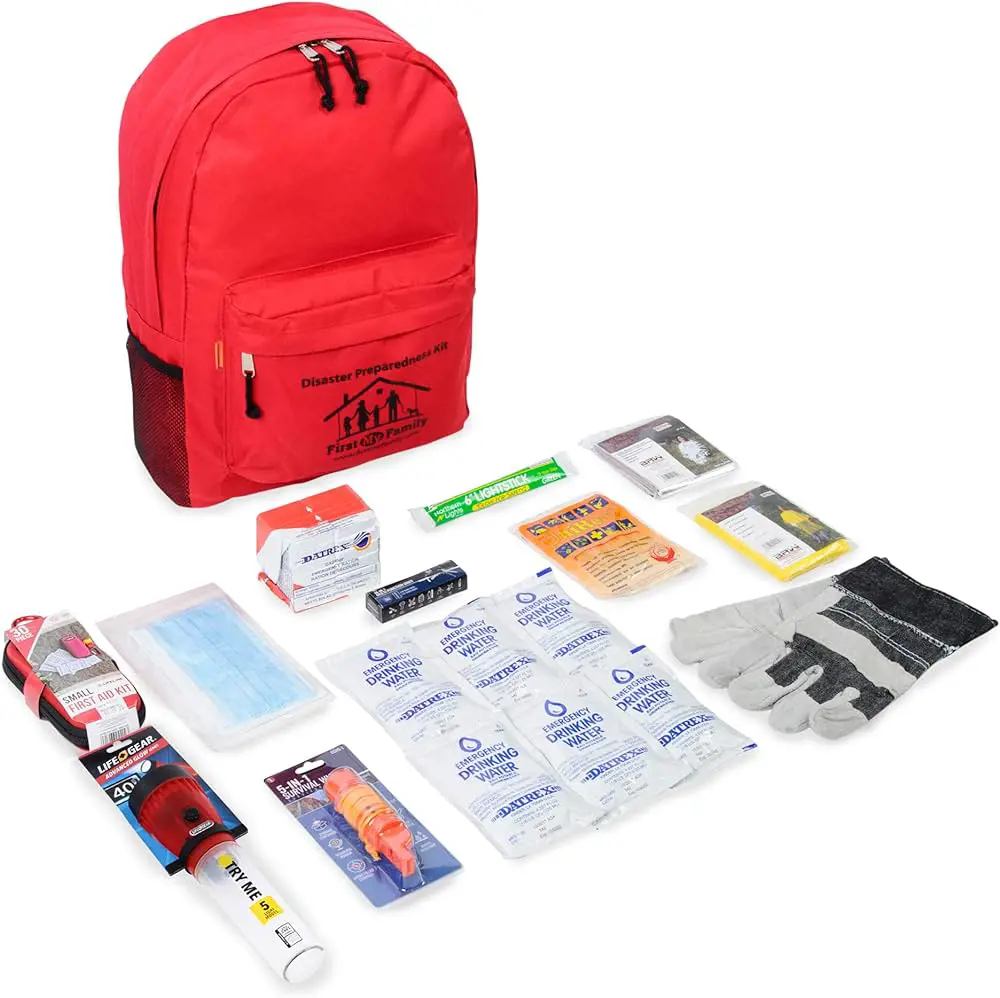
An evacuation kit is a collection of essential items that you should have ready in case you need to leave your home quickly due to an emergency or natural disaster. Whether it's a hurricane, wildfire, or other unforeseen event, having an evacuation kit prepared can make the difference between being prepared and being caught off guard. In this article, we will discuss the essential items that you should include in your evacuation kit, based on scientific research and real-life experiences.
Water:
Water is the most essential item in any emergency kit. The general rule of thumb is to store one gallon of water per person per day. This water can be used for drinking, cooking, and basic sanitation. Make sure to store water in clean, food-grade containers and replace it every six months to ensure freshness.
Non-perishable food:
Include a supply of non-perishable food items that can last for at least three days. These can include canned foods, energy bars, and dry goods such as rice or pasta. Choose foods that are easy to prepare and require minimal cooking or refrigeration.
Medications and first aid:
Do not forget to pack any prescription medications that you or your family members may need. Additionally, you should also include a basic first aid kit that includes bandages, antiseptic ointment, pain relievers, and any specific medical supplies you may need, such as asthma inhalers or epinephrine auto-injectors.
Flashlight and batteries:
In the event of a power outage, a flashlight and spare batteries are essential. Opt for LED flashlights, as they are more energy-efficient and last longer. Keep extra batteries in a separate zip-lock bag to prevent them from leaking or corroding over time.
Personal hygiene items:
Pack personal hygiene items such as toothbrushes, toothpaste, soap, shampoo, and toilet paper. These items may seem small, but they can make a big difference in your comfort and well-being during an emergency situation.
Emergency blanket and warm clothing:
Include a lightweight emergency blanket or sleeping bag in your evacuation kit. These can provide warmth and insulation if you find yourself in a cold or challenging environment. Additionally, pack warm clothing such as jackets, hats, gloves, and socks, as you may need to protect yourself from the elements.
Important documents:
Gather important documents such as identification papers, passports, medical records, insurance information, and contact information for family members and friends. Keep these documents in a waterproof and portable container, such as a zip-lock bag or a small fireproof safe.
Cash and credit cards:
In case of a power outage or disruption in banking services, having some cash on hand can be useful. Additionally, make sure to carry a credit card or two, in case you need to make emergency purchases or access funds.
Whistle and signaling devices:
Include a whistle or other signaling devices, such as a mirror or a brightly colored cloth. These can help alert rescuers to your location if you are in need of assistance.
Entertainment items:
While not essential for survival, including some form of entertainment, such as books, playing cards, or a portable music player, can help pass the time and alleviate stress during an emergency situation.
It's important to periodically review and update your evacuation kit to ensure that all items are in good condition and meet the needs of your family. Remember to consider the specific needs of infants, elderly family members, and pets when preparing your evacuation kit. By having a well-stocked evacuation kit, you can increase your chances of staying safe and comfortable during an emergency.
Essential Items to Pack for a C-Section Delivery
You may want to see also

How many days' worth of food and water should I pack in an evacuation kit?
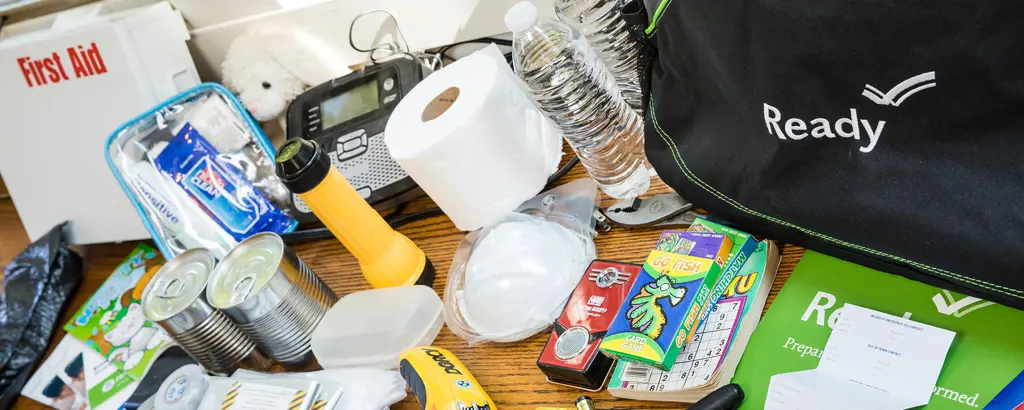
When preparing for an emergency evacuation, it is important to have essential supplies packed, including food and water. The amount of food and water that should be packed in an evacuation kit depends on various factors such as the number of people, their ages, and the expected duration of the evacuation. In general, it is recommended to have at least a 3-day supply of food and water per person.
Water is the most critical resource to have in an emergency. The human body can only survive a few days without water, so it is essential to ensure an adequate supply. Experts suggest having at least one gallon of water per person per day for drinking and sanitation purposes. This means that for a family of four, an evacuation kit should contain a minimum of 12 gallons of water for a 3-day period. It is also essential to consider the specific needs of individuals, such as infants, pregnant women, and those with medical conditions, as they may require additional water or specialized solutions.
In addition to water, it is important to have a sufficient supply of non-perishable food items in an evacuation kit. These should be easy to prepare and require minimal or no cooking. Examples of suitable food items include canned goods, granola bars, dried fruits, nuts, and peanut butter. Aim to have enough food to meet the calorie needs of each individual. On average, an adult requires around 2,000-2,500 calories per day, but this can vary depending on age, sex, and activity level. Consider including a variety of foods to ensure a balanced diet during the evacuation period.
When packing food and water in an evacuation kit, it is crucial to choose items with a long shelf life and to regularly check and rotate them to ensure freshness. Remember to include a manual can opener, disposable plates, cups, and utensils for convenience. It is also advisable to include any necessary medications, infant formula, and specialized items for those with specific dietary needs.
It is worth noting that the recommended 3-day supply of food and water is considered a minimum guideline. It is always prudent to prepare for longer periods, such as a week or even two weeks, especially if you live in an area prone to extended power outages or natural disasters. Moreover, if you have pets, be sure to include food and water for them in your evacuation kit as well.
In conclusion, when preparing an evacuation kit, it is important to include an adequate supply of food and water. For water, aim to have at least one gallon per person per day, and consider specific needs of individuals. For food, include non-perishable items that meet calorie requirements and have a long shelf life. Additionally, consider the needs of your family, such as infants, pregnant women, and those with medical conditions. Always prepare for longer durations than initially anticipated and remember to regularly check and rotate your supplies for freshness. By taking these steps, you can ensure that you and your family are adequately prepared for an emergency evacuation.
The Ultimate Packing Guide for Your Emmaus Walk: What to Bring
You may want to see also

Should I include any specific medical supplies or medications in an evacuation kit?
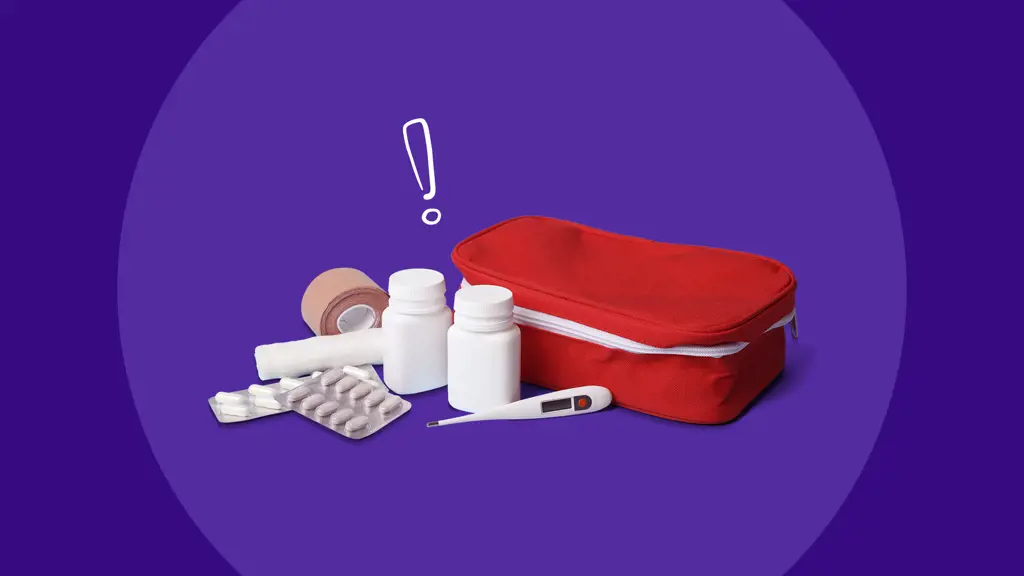
In times of emergencies or natural disasters, having an evacuation kit prepared is crucial. This kit should include a variety of essential items, and one important category to consider is medical supplies and medications. In order to be prepared for any kind of situation, it is important to include specific medical supplies and medications in your evacuation kit.
When assembling your evacuation kit, consider the following medical supplies. First and foremost, have a first aid kit that includes bandages, gauze pads, adhesive tape, scissors, and antiseptic wipes. This will allow you to treat minor injuries that may occur during your evacuation. Additionally, include a thermometer to monitor body temperature and a pair of tweezers to remove splinters or ticks.
It is also important to include medications in your evacuation kit. If you or anyone in your family is on prescribed medications, make sure to have a supply to last at least a week. Keep these medications in their original packaging, and regularly check the expiration dates to ensure their effectiveness. For over-the-counter medications, it is wise to have basic pain relievers, such as ibuprofen or acetaminophen, as well as medications for upset stomachs or allergies.
In addition to these general medical supplies and medications, consider any specific needs or conditions in your family. For example, if someone in your family has asthma or allergies, include their inhaler or EpiPen in the kit. If you have young children, include medications appropriate for their age, such as children’s pain relievers or fever reducers.
When packing your evacuation kit, keep in mind that it may need to sustain you for several days. As a result, consider the quantity of medications and supplies you include. It is better to have more than you think you will need, as it is difficult to predict the exact length of the emergency or the availability of medical help during that time.
Lastly, regularly check and update your evacuation kit. Medications and supplies may expire, so it is important to replace them accordingly. Additionally, assess the needs of your family members as they may change over time due to aging or new medical conditions.
Overall, including specific medical supplies and medications in your evacuation kit is crucial for ensuring the health and well-being of you and your family members during emergencies or natural disasters. By being prepared with the necessary items, you can be confident in your ability to provide basic medical care until additional help becomes available. Remember to consider the individual needs of your family members and regularly update your kit to maintain its effectiveness.
The Essential Packing Guide for a September Trip to Norway
You may want to see also

Are there any important documents or personal identification items that should be included in an evacuation kit?
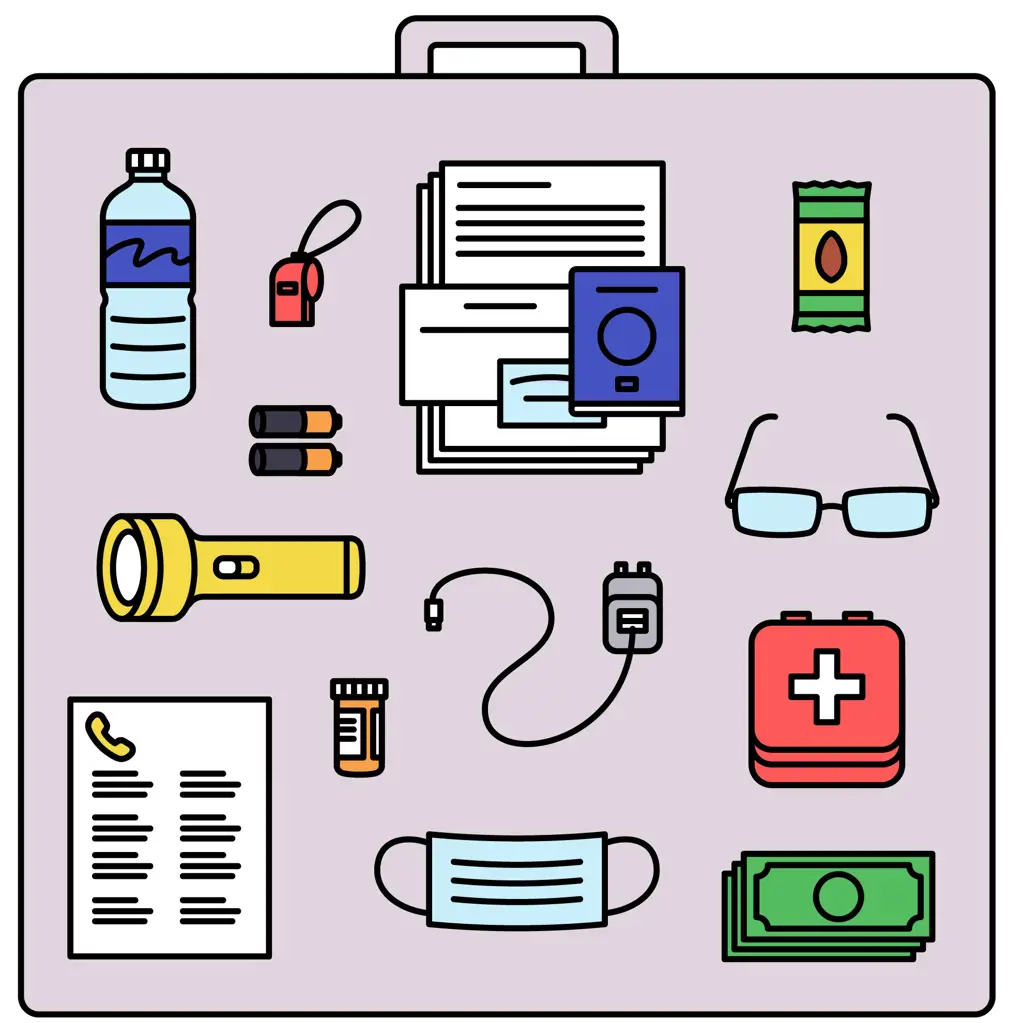
When preparing for an evacuation, it is essential to have all the necessary documents and personal identification items readily available in your evacuation kit. These items will not only help you during the evacuation process but also ensure that you can quickly and efficiently handle any post-evacuation tasks. Here are some important documents and personal identification items that should be included in your evacuation kit.
Identification Documents:
The first and most crucial category of documents to include in your kit is identification documents. These documents are vital for establishing your identity and proving your residency or citizenship. Some essential identification documents to include are:
- Driver's License or State ID: This document is essential for establishing your identity and can be used as proof of residence.
- Passport: If you have a passport, make sure to include it in your evacuation kit. It is a globally recognized form of identification and may be required for international travel.
- Social Security Card: This card is necessary for accessing social security benefits and other related services. Keep a copy of your social security card in your evacuation kit.
- Birth Certificate: Your birth certificate is another important form of identification, especially if you do not have a driver's license or passport.
Financial Documents:
During an evacuation, it is crucial to have all your financial documents in order. These documents will help you manage your finances and access any necessary funds. Some important financial documents to include in your evacuation kit are:
- Bank Statements: Include recent bank statements to help you manage your finances during the evacuation period.
- Credit and Debit Cards: Ensure that you have all your credit and debit cards readily available. These cards will help you access funds and make necessary purchases during the evacuation.
- Cash: It is always a good idea to have some cash on hand in case ATMs and other banking services are unavailable during the evacuation.
Insurance Documents:
Having your insurance documents readily available during an evacuation is crucial. These documents will help you file claims and access necessary insurance coverage. Some important insurance documents to include in your evacuation kit are:
- Home Insurance: Keep a copy of your home insurance policy, including contact information for your insurance provider.
- Auto Insurance: Include your auto insurance policy information and contact details for your insurance company.
- Health Insurance: Keep a copy of your health insurance card and any other important health insurance documents.
Legal Documents:
In some situations, you may require legal documents during an evacuation. Including these documents in your evacuation kit will help you handle any legal matters that may arise. Some important legal documents to include are:
- Will and Power of Attorney: If you have a will or power of attorney, make sure to include copies in your evacuation kit.
- Marriage Certificate or Divorce Decree: These documents can be important, especially if you need to establish marital status or custody arrangements during an evacuation.
- Legal Contracts: If you have any ongoing legal contracts, such as lease agreements or loan agreements, include copies of these in your evacuation kit.
It is also crucial to make digital copies of all these important documents and store them securely on a portable storage device or in a cloud-based service. This will ensure that you have access to your documents even if your physical copies are lost or damaged during the evacuation.
In conclusion, there are several important documents and personal identification items that should be included in your evacuation kit. These documents include identification documents, financial documents, insurance documents, and legal documents. Remember to make digital copies of all your important documents and store them securely to ensure easy access during an evacuation. By preparing your evacuation kit with these essential items, you will be better equipped to handle any post-evacuation tasks and ensure your safety and well-being.
Essential Items to Pack for Your RV Trip
You may want to see also

Is there any additional equipment or gear that is recommended to have in an evacuation kit, such as flashlights or communication devices?
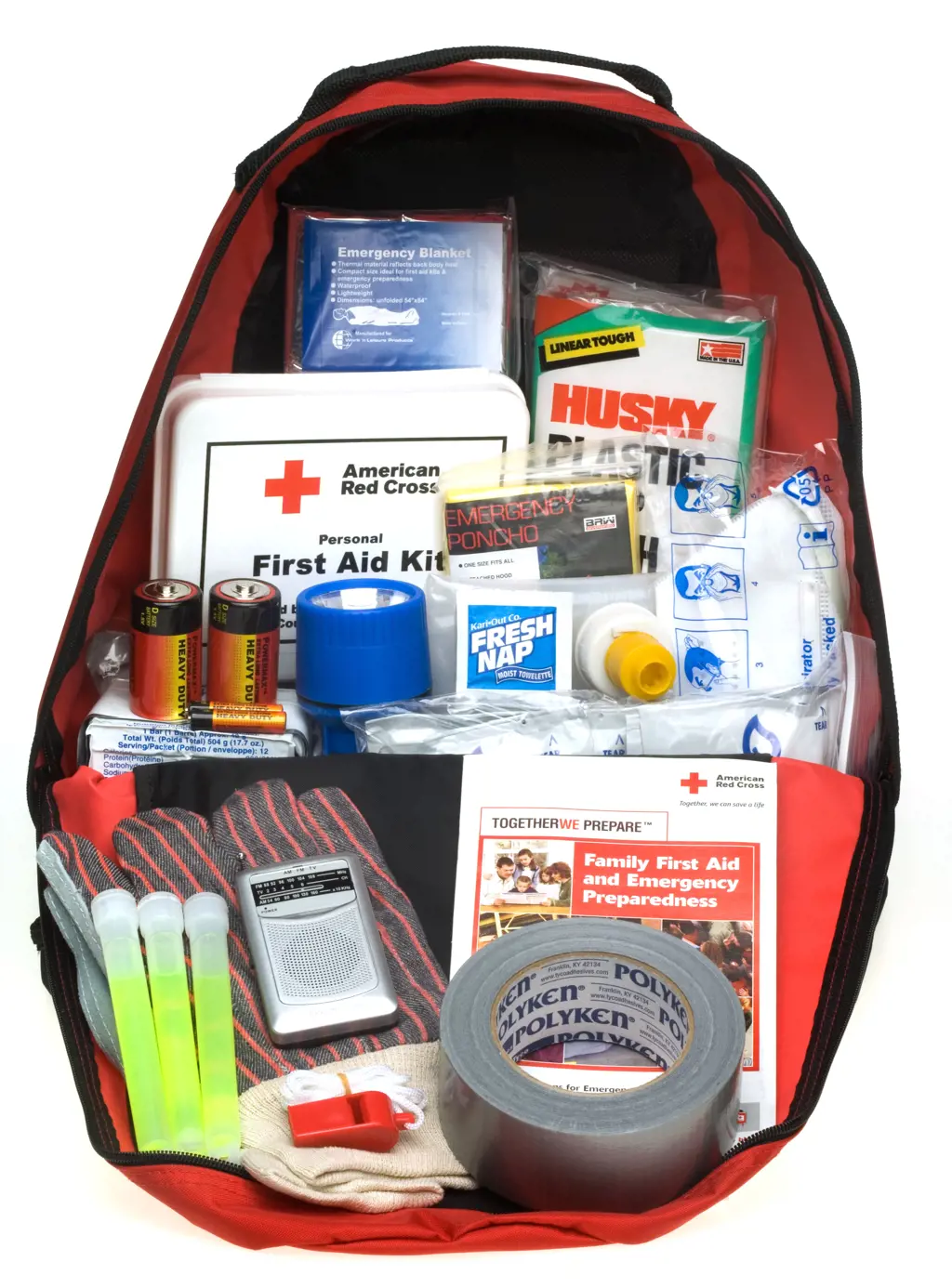
In the event of an emergency or disaster, having a well-stocked evacuation kit is crucial. While it is important to have the basic necessities like food, water, and first aid supplies, there are also several additional equipment and gear that are highly recommended to have in your evacuation kit. These items can help you navigate through the crisis and ensure your safety and well-being.
One of the most important additional equipment to have in your evacuation kit is a flashlight or headlamp. In an emergency situation, power outages are common, and having a reliable source of light is essential. Flashlights with extra batteries or a rechargeable headlamp can provide you with the necessary illumination to move around safely in the dark or provide a signal for help if needed.
Another important piece of equipment to consider is a communication device. Having a fully charged cell phone with a portable power bank can allow you to make emergency calls or send messages for help. Additionally, a hand-cranked or battery-powered radio can help you stay informed about the latest updates and guidance from authorities during the evacuation process.
A multi-tool or Swiss army knife is also recommended to have in your evacuation kit. This versatile tool can come in handy for various tasks such as opening cans, cutting ropes, or repairing simple mechanical issues. It is a compact and lightweight tool that can easily fit in your kit and provide you with a wide range of functionalities.
Additionally, it is crucial to include a whistle in your evacuation kit. A whistle is a simple yet effective tool that can be used as a signal for help if you find yourself in a dangerous or life-threatening situation. It can be heard from a distance and can attract attention from rescuers or other people nearby.
A portable water filter or purification tablets can be essential in case your access to clean drinking water is compromised during the evacuation. These devices can help purify and make water safe for consumption, reducing the risk of waterborne illnesses.
Lastly, including a dust mask or N95 respirator in your evacuation kit is highly recommended. In emergency situations, the air quality may be compromised due to smoke, dust, or other pollutants. Having a mask can provide protection for your respiratory system and prevent inhalation of harmful particles.
In conclusion, in addition to the basic necessities, there are several additional equipment and gear that are highly recommended to have in your evacuation kit. These items include a flashlight or headlamp, communication devices like a fully charged cell phone and a radio, a multi-tool or Swiss army knife, a whistle, a portable water filter or purification tablets, and a dust mask or N95 respirator. Having these items in your kit can significantly enhance your preparedness and ensure your safety during an emergency or disaster.
Essential Packing Tips for Exploring Victoria's Splendor
You may want to see also
Frequently asked questions
When preparing an evacuation kit, it is important to include essential items that will help you survive for a minimum of 72 hours. This includes non-perishable food items such as canned goods and energy bars, a gallon of water per person per day, a first aid kit, prescription medications, a battery-powered or hand-crank radio, extra batteries, a flashlight, a multi-tool, personal hygiene items, a change of clothes, a blanket or sleeping bag, important documents, cash, and emergency contact information.
It is recommended to pack a gallon of water per person per day for at least three days. This means that for a family of four, you should have at least 12 gallons of water in your evacuation kit. Water is essential for staying hydrated and can also be used for cooking and cleaning.
Yes, it is important to include non-perishable food items in your evacuation kit. These can include canned goods, energy bars, dried fruits, nuts, and other food items that have a long shelf life. Aim to have enough food to last at least three days. Also, don't forget to include a manual can opener if you pack canned goods.
Yes, it is recommended to pack a change of clothes for each person in your evacuation kit. These clothes should be appropriate for the climate and weather conditions you may encounter during an evacuation. Include items such as shirts, pants, underwear, socks, and a sturdy pair of shoes. It is also important to consider packing weather-specific items such as rain jackets, hats, and gloves.



